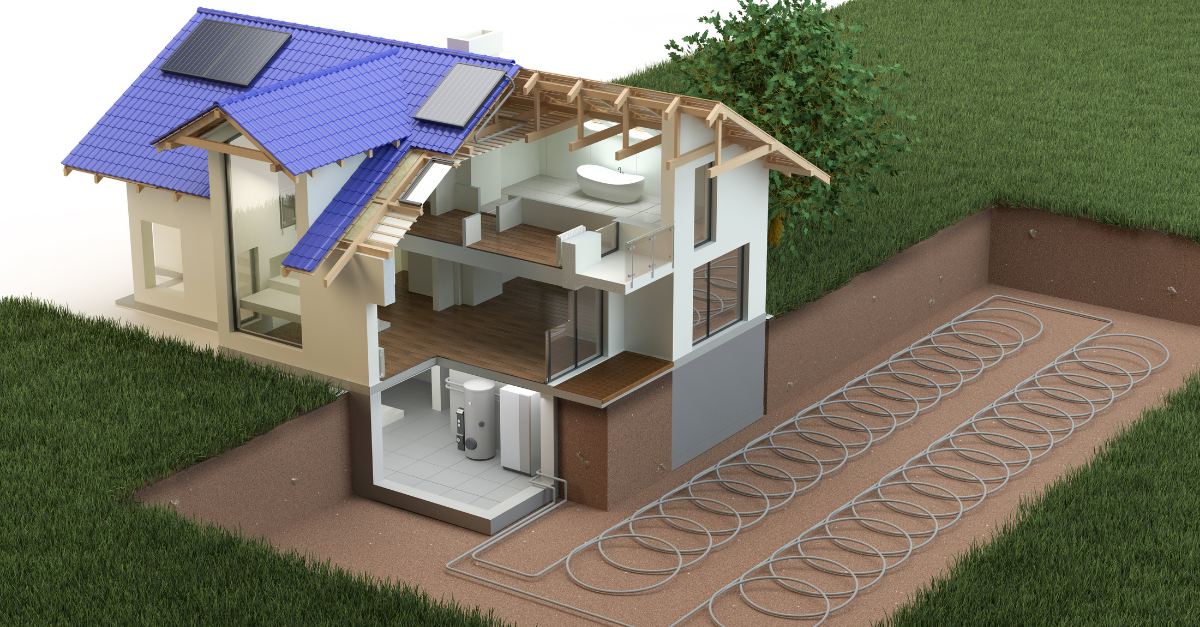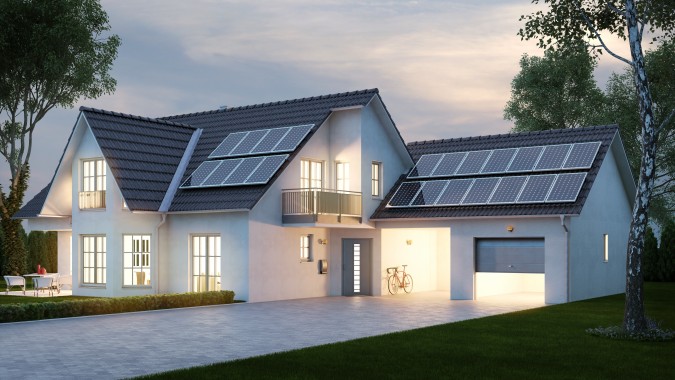Should I install a ground source heat pump?
Heating your home in a sustainable way is increasingly a must for many self-builders.
Ground source heat pumps (GSHPs) use solar energy naturally stored in soil, bedrock and groundwater as a heat source. They do require electricity to operate, but they efficiently convert this into five times as much heat energy for every unit of electricity used.
The pump performs the same role as a boiler in a central heating system. But it uses ambient heat from the ground, rather than burning fuel to generate heat.
Ground source heat pumps qualify for the Government’s Renewable Heat Incentive (RHI). This means that those with renewable heat-generating technologies are paid back for the heat they produce. You may be wondering how does this all stack up financially? You can find an estimation of the costs and savings from the Energy Savings Trust here.
GSHP’s are also eligible for existing homes under the Green Homes Grant Scheme where homeowners can apply for up to £5,000 in vouchers for energy efficient home improvements. Find out more about the scheme here.

What you need in order to install a ground source heat pump
This kind of pump requires plenty of space for the system to be installed – plenty of room for digging machinery. How big the ground loop needs to be depends on how big your home is and how much heat you need. A mixture of water and anti-freeze is pumped around the ground loop and absorbs the naturally occurring heat stored in the ground. The water mixture is compressed and goes through a heat exchanger, which extracts the heat and transfers it to the heat pump. The heat is then transferred to your home heating system.
The pros and cons
One of the main benefits of installing this kind of pump is its efficiency levels. You need to use electricity to power the pump that circulates the liquid in the ground loop. But for every unit of electricity used by the pump, you get between two and four units of heat – making this an efficient way to heat a building. It also cuts costs – cheaper Economy 7 electricity tariffs can be used to lower the cost of electricity to power the heat pump.
It could lower your fuel bills, especially if you replace conventional electric heating or an old oil or LPG boiler. It could provide you with an income through the government’s Renewable Heat Incentive (RHI). It will heat your home as well as your water and it is low maintenance.
The payback period is difficult to predict. You have to take into consideration the type of system you're replacing, whether you qualify for RHI payments, how well insulated your home is and how you'll be using the heat generated from the pump.
CONS: It’s an expensive endeavour to install this kind of pump, typically around £10,000 to £18,000 depending on the size of the system you choose. This cost doesn’t take into account the time and costs involved in digging the groundworks and planning permission may be required.
What are the alternatives?
Renewable energy is generated from natural resources such as the sun, wind and water. These can create comfortable homes with minimal running costs and reduce the environmental impact of your self-build.
Read our blog on other renewable energy sources for your self-build.
Jewson supply a range of renewable energy solutions for your self-build, including GSHP’s, which you can explore more here.


